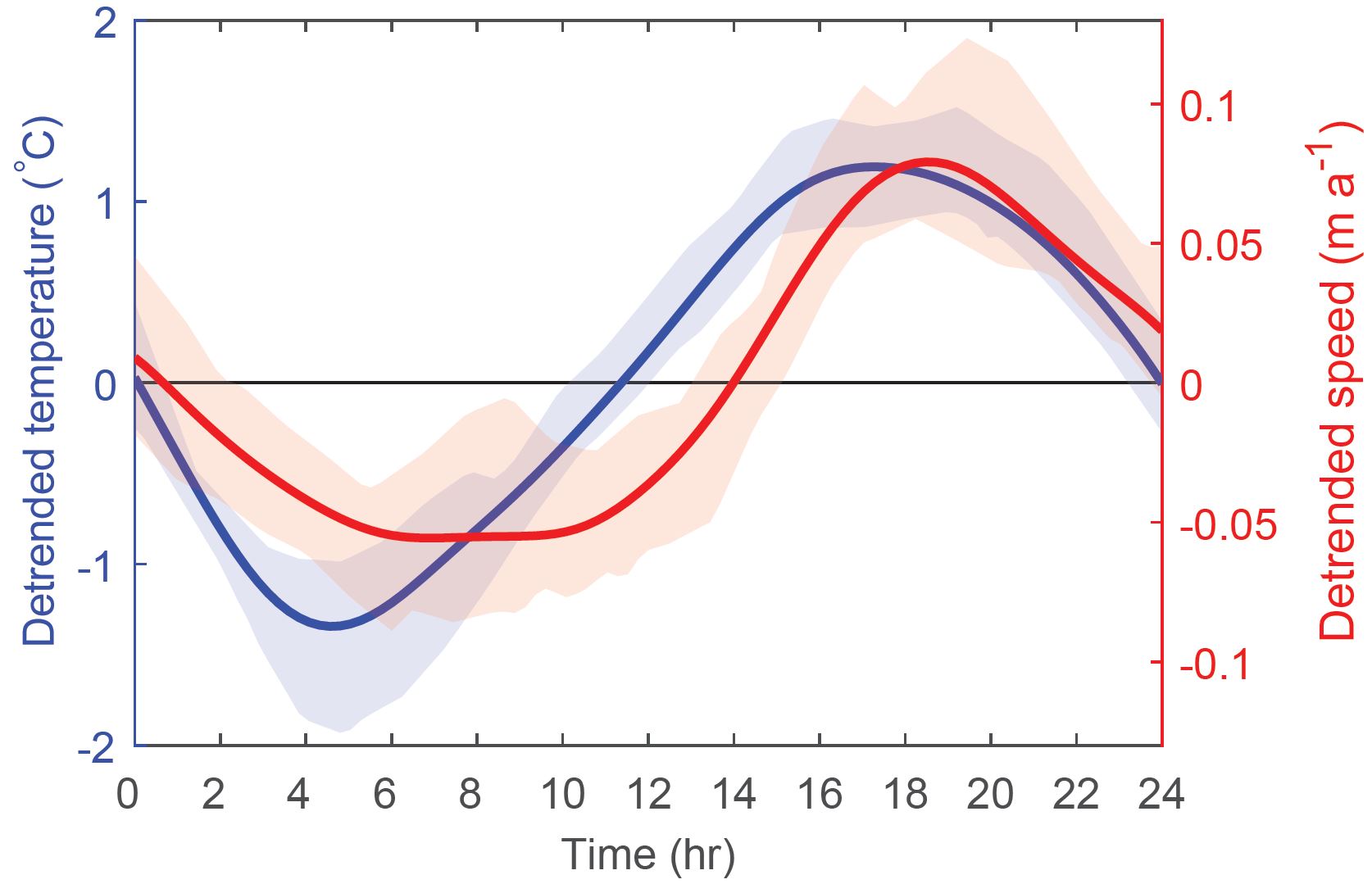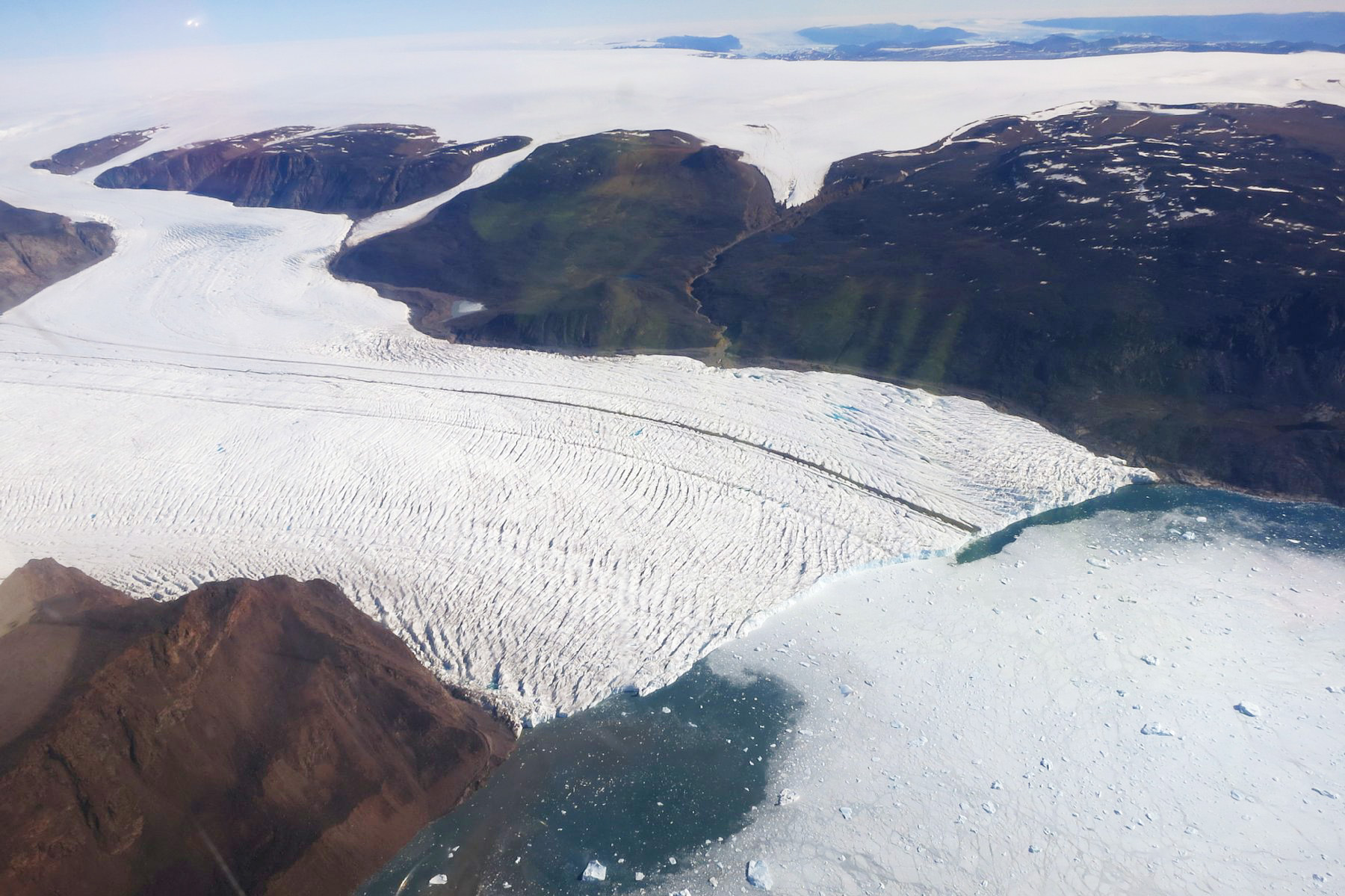Joint Press Release by Hokkaido University and the National Institute of Polar Research (NIPR).
Detailed study of a Greenland glacier's flow rate reveals the impact of environmental conditions.
Even though 'glacial' is commonly used to describe extremely slow, steady movement, a new study has found that glaciers speed up and slow down on a daily - even hourly - basis in response to changes in air temperature, rainfall and the tides.
A research team including scientists from Japan's Hokkaido University studied the movement of a glacier in Greenland over six summers and mapped those movements against local weather patterns and tides to explore how these affect the glacier's flow. The results have been published in the journal The Cryosphere.
"Short-term speed variations are key to understanding the physical processes controlling glacial motion, but studies are sparse for Greenlandic tidewater glaciers, particularly near the calving front," says Hokkaido University's Shin Sugiyama, lead author of the study. "Studying glacier dynamics near the ocean boundary is crucial to understanding the current and future mass loss of the ice sheet."
The team chose the Bowdoin Glacier-also known as Kangerluarsuup Sermia in Greenlandic-whose terminus, or tip, calves into Bowdoin Fjord in northwestern Greenland. Like so many other glaciers, it has experienced thinning and rapid retreat since 2008.
Researchers placed GPS devices on the ice at various points from the calving front -from 500 m up to four kilometres - to measure its speed, as well as sensors that recorded air temperature and rainfall near the glacier. These recorded a total of 90 days' of data from 2013 to 2019.
The analysis revealed that the glacier's flow sped up on a daily and twice-daily basis. The first boost is likely because of daily increases in meltwater flow when the daytime air temperature increases, while the second was more evident near the terminus of the glacier and likely a result of the twice-daily tidal movements. The glacier's speed peaked twice a day, either coinciding with or just before low tide.

Diurnal variations in temperature (blue) and ice speed four kilometers from the calving front (red) in 2013-2017. The ice speed peak lags behind the temperature peak by approximately 2 hours. (Shin Sugiyama, et al. The Cryosphere. January 31, 2025)
The glacier also showed one or two acceleration events each year which coincided with either unusually high temperatures or unusually heavy rainfall.
"The correlations between ice speed and temperature demonstrate the strong influence of meltwater production on the dynamics of a Greenlandic outlet glacier," says Sugiyama. The glacier's flow accelerated more when temperatures rose above 10 degrees C, and there was only a two-hour lag between temperature peaks and speed peaks, which shows how quickly the meltwater drained to the glacier bed.
However, the association between heavy rain and glacier speed was more complex, which the researchers think is because of interactions between the influence of tides and the efficiency of sub-glacial drainage.
"Our results provide important insights into tidewater glacier dynamics and contribute to an accurate understanding of future evolution of the ice sheet under a changing climate and environment in Greenland," Sugiyama says.

The research team in Greenland, including authors Evgeny Podolskiy (first from left), Shin Sugiyama (second from right) and Izumi Asaji (first from right). (Photo: Shin Sugiyama)
Original Article:
Shin Sugiyama, et al. Ice speed of a Greenlandic tidewater glacier modulated by tide, melt, and rain. The Cryosphere. January 31, 2025.
DOI: 10.5194/tc-19-525-2025
Funding:
This research was funded by the Ministry of Education, Culture, Sports, Science and Technology of Japan (MEXT) through the Green Network of Excellence (GRENE) Arctic Climate Change Research Project, the Arctic Challenge for Sustainability (ArCS) (JPMXD1300000000) and the ArCS II projects (JPMXD1420318865); and the Japan Society for the Promotion of Science (JSPS) KAKENHI (20H00186; 2020-2025).







